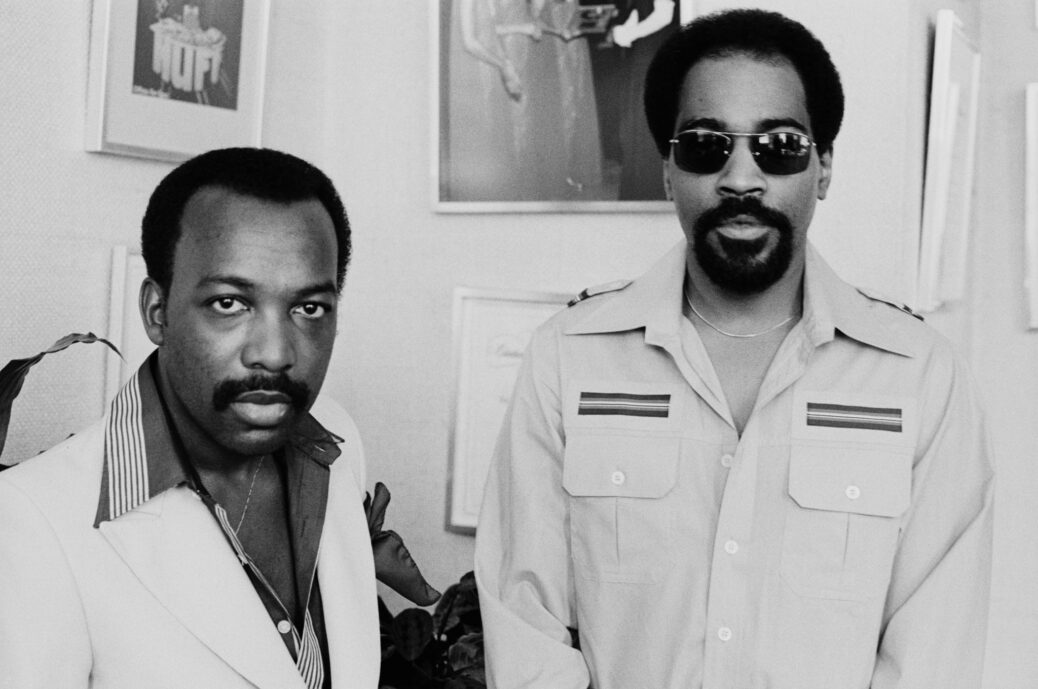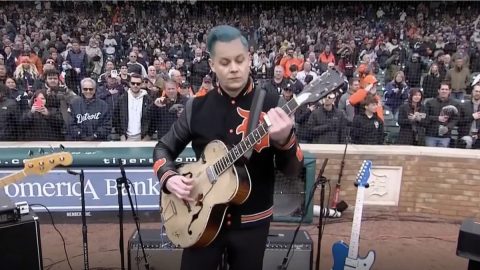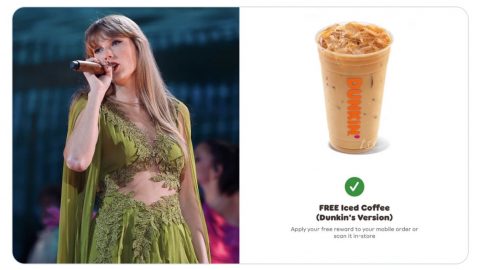Fifty years ago, the sound of Philly Soul was born out of the legendary Philadelphia International Records. With the talents of The O’Jays, Patti LaBelle, Teddy Pendergrass, The Three Degrees, McFadden & Whitehead, and others, the label rewrote the standards of soul music by blending in R&B, funk, and doo-wop with massive orchestral arrangements. To celebrate all P.I.R. contributed to the world of music, we’re giving away a Best of Philadelphia International Records prize pack, which includes vinyl, turntables, and headphones. Click here for more information on these prizes and how to enter this exclusive giveaway.
The face of soul music as we know it might have been completely different if not for the ambition and drive of a Columbia imprint, once housed in the vacant offices of Cameo-Parkway Records.
Philadelphia International Records (P.I.R.), founded by composers Kenneth Gamble and Leon Huff, was formed in 1971 with a modest roster of up-and-coming R&B musicians based out of Philadelphia, many of whom had found moderate success in the late ‘60s as part of Gamble and Huff’s previous musical endeavors. The burgeoning label offered a new style for a new decade, transforming an unlikely geographical hub, Philadelphia, into the Motown of the ‘70s. But Gamble and Huff wanted more than just regional hits.
That opportunity came knocking at the turn of the decade in the form of Columbia Records. Clive Davis, the president of Columbia Records at the time, believed in the talent and vision of Gamble and Huff and saw this as a chance for his label to expand further into Black music. Columbia offered Gamble and Huff a distribution deal and a generous advance to record singles and a few albums. With the advance, the two opened Philadelphia International Records.
With the ’70s, however, came the clash of reality. As Gamble and Huff continued to write and compose, the social and political fermentation of the times threatened to boil over: the Vietnam War was in full swing, and race relations were less than stellar as the country found itself split over desegregation. “We were talking about the world and why people really can’t work together. All this confusion going on in the world,” Gamble told Smithsonian Magazine in a 2011 interview. “So we were talking about how you need something to bring people together.”
And with their label, Gamble and Huff did just that. The early months of 1972 saw the arrival of Black-helmed soul music to US airwaves, and at one point, the five top-selling records and 11 of the top 20 were by Black artists, many of whom were writing songs with heavy-hitting social commentary that stressed unity, especially among the African-American community, in the face of attack. The powerful songs Gamble and Huff were penning at a prolific rate for performers such as The O’Jays, Teddy Pendergrass, The Three Degrees, and Harold Melvin & the Blue Notes sent shockwaves through America with string-infused soul music that arose out of the Black experience, focusing on the complexities of Black identity and on the importance of coming together. As The Three Degrees, one of the label’s most prominent female groups, would sing the next year on “Year of Decision” (1973), the label’s artists urged everyone in America to “leave the bad stuff alone” and join together “like soldiers in an army.”
While ‘70s music lovers may know the songs, they may not appreciate the full backstory of the breathtaking array of female voices who were cutting through the noise and making a name for themselves in the face of adversity. As we celebrate Women’s History Month, we look back and highlight the efforts and pioneering legacies of several Philadelphia International Records Black female acts: Dee Dee Sharp, The Three Degrees, Jean Carn, and The Jones Girls. These women helped further the Philly Soul Sound, break down barriers and pave the way for artists like Patti Labelle and Phyllis Hyman to later thrive at P.I.R., and, as soul slowly gave way to R&B, hip-hop, and funk, set the template for a generation of musicians that would follow. They were at the helm of some of the label’s — and popular music’s — best moments and proved that it was not just talent that made for good music, but perseverance. These women just needed a label that believed in them enough to let them find their voice.
Dee Dee Sharp
Philadelphia native Dee Dee Sharp had already known the ins and outs of fame by the time she met Gamble and Huff and made a second home and career for herself at Philadelphia International Records. By the age of 17, Sharp had been a regular performer on Dick Clark’s American Bandstand; performed alongside established name artists like The Supremes, The Isley Brothers, and Chubby Checker; and become the first Black teen idol overnight back in the ’60s when her song “Mashed Potato Time” soared to No. 2 on the Billboard pop charts and ignited a dance craze that swept dance floors across the country.
After a string of youthful hits, Sharp took a step back from the spotlight (mostly releasing singles) to grow up and get married (to none other than Kenneth Gamble) before returning to the music business, where she found herself managing the roster of Gamble and Huff’s recording artists as well as singing. Alongside her vocal legacy, Sharp is credited with procuring Jerry Butler, The Blue Notes, The O’Jays, and Lou Rawls for the label, all of whom would go on to produce some of P.I.R.’s best-known music.
Eventually, Sharp returned to singing full time with her 1975 comeback, Happy ‘Bout the Whole Thing, her first full-length release in 12 years and her first under the P.I.R. umbrella. The album is a marvel not only for her rich, melismatic voice, but also for how each element of its subtly psychedelic arrangement makes its presence known alongside her words. It would be a few years before Sharp returned to the charts, but the delectable singer continued to craft wonderfully composed albums for P.I.R., each bringing a unique timelessness and vitality to her catalog. By the time the charts finally recognized her lovely songwriting and penchant for dancing melodies once again, it was 1981, and “Breaking and Entering” was hitting No. 1 on the dance charts. It was a second chance at the spotlight for a gifted singer who had once risen to fame and broken down barriers as a young Black girl in a racially divided nation.
The Three Degrees
Black girl groups of the ’70s were nothing if not the epitome of class, grace, and talent, and The Three Degrees were no exception. The original Philly-based trio of Fayette Pinkney, Shirley Porter, and Linda Turner weren’t just leaders of the pack; they stood out from it. Their idiosyncratic approach to a new kind of soul, one that blended doo-wop, jazz, subtle disco shuffle, and a hint of opera, was underscored by each of their abilities to deliver harmonies in seamless unison. Although The Three Degrees have had more than a dozen different members since their original formation in 1963, every iteration of the group carried on with the decorum of the last, each of them always exceptional singers in their own right.
Thus, it was never a lack of talent that brought about the group’s early, turbulent struggles. By 1973, the three had left their label and were once again in the wind, before deciding to return to Philadelphia for another round of recording. By coincidence, Gamble and Huff were in search of more artists for their roster, and The Three Degrees found themselves pulled into the P.I.R. matrix. It was their tenure there that would see Pinkney, Valerie Holiday, and Sheila Ferguson morph into serial hitmakers.
Starting with “Dirty Ol’ Man” in 1973, The Three Degrees cut a series of undeniable hits for P.I.R. – “When Will I See You Again” and “Year of Decision” that same year, “Love Is the Message” (with MFSB) in 1974, and “T.S.O.P. (The Sound of Philadelphia)” later that spring — all driven by their simple, choir-influenced vocal harmonies with casual, affable delivery. The group found their voices immortalized anew as “T.S.O.P. (The Sound of Philadelphia)” was made the theme song for Soul Train, a popular television showcase for Black music. It had few lyrics, but the energy of the song was florid, with the punchiest part coming in the tight instrumental support from MFSB, the label’s revolving collective of studio musicians. Quickly, the voices of The Three Degrees became synonymous with the Sound of Philadelphia and brought the group to new ears as Soul Train (and its theme song, which became the first television theme song to reach No. 1 on the Billboard Hot 100 Chart in 1974) soared beyond local Chicago stations and became syndicated around the United States.
The summer following Soul Train was an exceptional time for The Three Degrees. The trio released their critically acclaimed sophomore album, The Three Degrees (1973), their first under their new label, with a trio of hit singles helping the group join fellow P.I.R. labelmates The O’Jays and Billy Paul near the top of the Billboard soul charts that year. “When Will I See You Again”, their highest-grossing single, is nothing but a masterpiece. A sinewy, bass-licked groove precedes buttery vocals floating in on a lush arrangement of dense strings above a hell of a trumpet section.
And such was the appeal of The Three Degrees: their unique approach managed to make the sound of heartbreak sound impossibly dreamy and turned being ghosted by a lover into something sparkly and sophisticated. As urban disco and psychedelic rock were exploding elsewhere, the women of The Three Degrees were galaxies ahead, creating their sparkly fusion of doo-wop, blues, R&B, and soul that married the best part of the bygone ‘50s with scintillating elements of the future.
Jean Carn
“Music to cry by, girls — here we go,” Jean Carn once said as she opened one of her biggest hits, “Love Don’t Love Nobody”, one night in Boston. It’s safe to assume there weren’t many dry eyes in the house.
Long before Mariah Carey hit the scene with that whistling voice of hers, Jean Carn had already solidified her place as soul’s most impressive siren, capable of turning heads rooms away with her earth-shattering five-octave range. Born Sarah Jean Perkins in Georgia 1947, Carn is a master of candor. She doesn’t just sing lyrics; she dramatizes every word.
An accomplished singer and pianist, equally adept at R&B, jazz, and gospel, Carn’s singing was nourished, like so many others, in church. As a little girl, she would give concerts to anyone who came by their house, and she was a little girl destined for the music biz. Carn’s hot streak began in 1976: freshly signed to PIR, she released her debut album, Jean Carn. She fit in perfectly at the label, nimbly crossing any barriers between sweet and sultry harmonies, soul and R&B, rousing whistle tones, and a more upbeat, funkadelic sound. She’s as nimble a lyricist as she is a vocalist, one minute unpacking playful couplets with the joyous delirium of new infatuation, and the next she’s crying out like she’s in a church pew. In Carn’s music, she understood that the beauty of love was not separate from the banalities of the everyday world, but rather something that grew out of it. And for every “I’m Back for More”, there was a polite, firm Carn telling you not to “let it go to your head, now.”
The Jones Girls
When The Jones Girls came to the label, it was the last year of the ’70s. Music trends, ever so finicky, had changed since Gamble and Huff had begun just eight years before: by now, urban disco-themed tracks had started to soundtrack the mainstream space, with slower tempos swapped out for faster, bass-underscored grooves, inspiring music with the unique ability to adapt to whatever setting — easy-listening or a night out dancing at the clubs. The Jones Girls bridged that gap.
Originally backup singers for popular soul acts like Aretha Franklin, Lou Rawls, and Diana Ross, it was a stopover in Philadelphia with Ross that originally got Shirley, Brenda, and Valorie Jones noticed by Gamble and Huff. Their debut album, The Jones Girls, released in 1979 under Philly International, was a high-class affair that melded the best of ‘70s disco and R&B with the solid songwriting of yore and crisp instrumental support from the label’s in-house studio collective. It seems almost devious not to note that the trio’s album sounded almost nothing like its label predecessors; by the end of the decade, synths and four-on-the-four beats were all the rage. It was a stylistic tide change that culminated in artists like Donna Summer and Gloria Gaynor sweeping the Grammy nominations that year.
Spurred on by the musical zeitgeist, it was their proclivity towards experimentation that could be credited for their debut album arriving so fully formed. “You Gonna Make Me Love Somebody Else” was a fast hit and a harbinger of the youthful, liberating sound of club-ready disco that would soon speed up even more and conquer dancefloors across the US. The song, along with its slower-beat sister, “Who Can I Run To”, were shining beacons in the Gamble and Huff catalog, and, more than anything, proved that they — and the Philly Sound — were absolutely capable of evolving. As everyone on the label moved jubilantly into the ’80s, they were sure to take with them the most important cornerstones of Philly music: love, joy, and a tight, simple rhythm.









Recent Comments